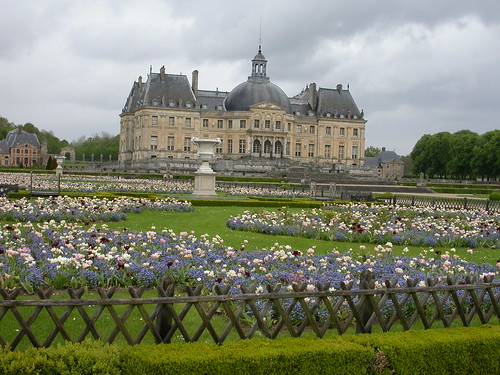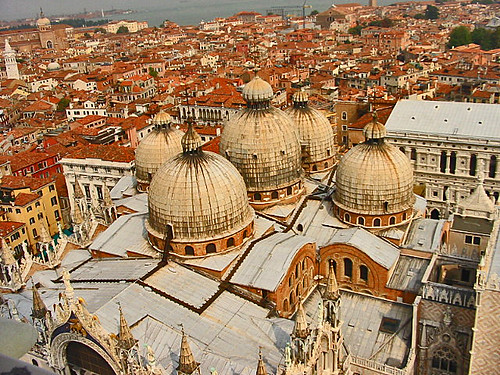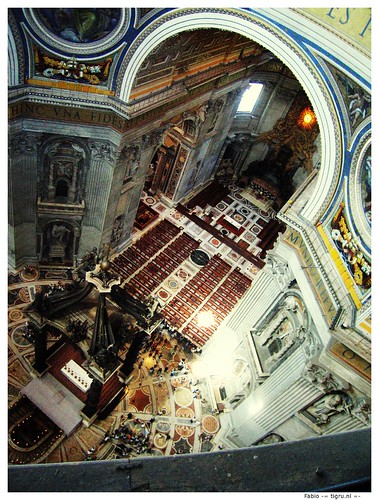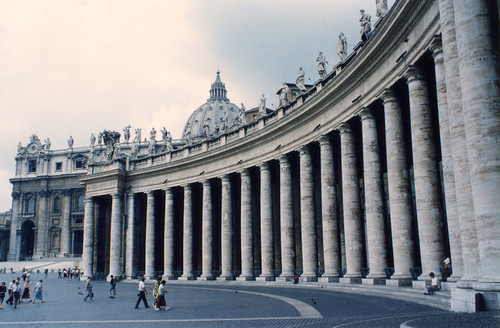Nature

image courtesy w_a_b @ flickr
One of the rooms of one of the greatest known buildings of France and Baroque, Versailles is the Hall of Mirrors, in which the highly controlled landscape is reflected in the mirrors (artifacts), visually expanding the amount of space perceived. Gothic Cathedrals utilized light as a natural artifact.
People

image courtesy Badulake Mahapralaya! @ flickr
The highly expressive image of St. Theresa in the Capella Cornaro, as an artifact, evokes emotion in the viewer, especially in the church setting.
SPACE
Nature

image courtesy Gibna Kebira @ flickr
The gardens of wealthy estates created spaces by manipulating nature in carefully planned gardens, such as the ones at Vaux-Le-Vicomte. In France, these gardens were highly formal, while in England they appeared more natural and informal but were no less planned than those in France.
People

image courtesy Memento @ flickr
The dome, such as those of the Renaissance church, Basilica San Marco, creates a conducive and awe-inspiring environment for large groups of people by expanding the space vertically. Also, in the Baroque period, public spaces, such as The Piazza Navona, created a space for people to gather and circulate through. Water is used here to emphasize “clarity, fluidity, and light.”
Material
The Capella Cornaro by Bernini in the Baroque period uses a strong sense of material similar to the Baldacchino in that the artist shaped the material, marble, to look like fabric.

image courtesy .Fabio @ flickr
BUILDING
Nature
Gothic cathedrals stretched the nature of the materials used. This sometimes caused collapse or near-collapse of the structures. Flying buttresses were conceived as an alternate structure to carry the weight.
People

image courtesy Piotr Sobczyk @ flickr
The Scalinate di Spagna is a well-known space for meeting and congregation. The importance of water in the Baroque period is illustrated here not with water, but with people flowing up and down the stairs.
Material
Ste. Madeline, a pilgrimage church constructed in the Renaissance, was constructed to bring awe, especially in the details, including snakes. These details, also used in other periods, began as an alternative source of information for a mostly illiterate (in the sense of reading and writing) society.
PLACE
Nature

image courtesy Luigi FDV @ flickr
The Trevi Fountain uses nature in a way of materials by incorporating water flowing over the structure and light reflecting off the water. In the Baroque spirit, it is a very organic, and peaceful place, created through its involvement of natural elements.
People
In the Renaissance, “Old” St. Peter became important for Christianity as it served as a gathering place for the community.

image courtesy mambo1935 @ flickr
The Baroque addition of the Piazza di S. Pietro by Bernini creates open spaces, connecting along boulevards in the city plan, which brings overall order to the city. It also enables a power structure, which tells people where to drive or walk.
Material
Bernini’s Baldaccino is a great example of Baroque’s importance of material. In this piece, Bernini created the surface to look like fabric. This aedicule creates a specific place within a greater space.
Symbol

image courtesy Luca Zappacosta @ flickr
The Duomo of Florence became a symbol of that city. Another example is the Abbey Church that symbolized the need for order within chaos- a Renaissance principle. The Baroque, highly formalized gardens of Versailles manipulates the landscape “as far as the eye can see”, showing the power of the king.


No comments:
Post a Comment